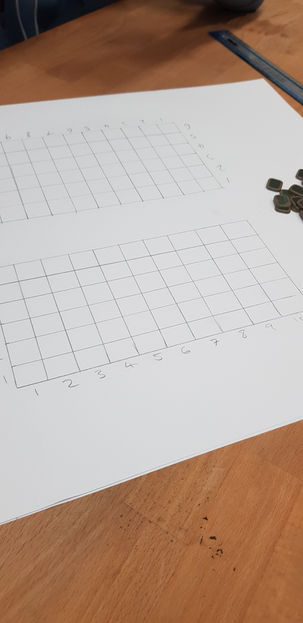Phase 3
Week 6
Ideation and prototype phase. Joining up with Alex, Adam and Jamie for Alex's theme Boreal Forest. To begin with, we start with general brainstorming for gameplay, games for inspiration, art styles and specific mechanics. This was a group effort which involved a lot of discussion on the ideas put forward, using the mood boards as reminders. Then, taking anything that sounded like an interesting game idea, whether we all liked it or just one of us did. This was to expand our options into a vast array of possibilities.
The team have decided to take one of the ideas we like and create a prototype for it while fleshing out the core concept for that idea's gameplay. Then, when we have a rough idea of what our idea we worked on could be, brought it back to work on with the group to discuss and turn the concept onto its head, finding flaws and design bugs that don't match our initial wants.
Logging Board Game Idea
My idea of a forestry board game that gets players to competitively control a logging firm or lumberjacks to chop down trees, something that some brief research told me was a very important part of the Canadian/Boreal forest's history [See Research Folder - Boreal Forest]. I began to outline some rules to help start prototyping, attempting to use James' lectures on matrices and Markov chains I played around with how this might help me design certain aspects [See Sketch Book, Pages 1-6]. However, this board game developed into a fast-paced, less micro-management game with input from Alex when playtesting.
'Drop a Log' Board Game Rules:
Players control a playing piece 'meeple' on a section of the board, gridded, that is their playing space. With dice to determine where assets will spawn on the board.
Goal - To score X amount of points first.
Method - Players chose a starting position on one of the tiles in the first row, this is the setup. The dice are thrown to begin a turn (Turns are shared between the players). Using the dice to determine a spawn location on the grid, each player places on their own grid a tree. The second part of the turn, players can now move their meeple one tile space in any direction possible to them. Then start a new turn by rolling the dice for a new grid reference. Collection of a log occurs as the player moves onto the chopped down tree tile. Dropping a log for a point occurs in its own turn without any movement possible.
Player - The players control the meeple by moving it one space per turn. The meeple can only be moved after the Dice are thrown and something spawns on the board. The meeple can chop down a tree a space adjacent to the meeple position, then move into that space as the movement, which ends the player turn. Meeples can carry 1 log at a time. Meeples can drop a log only before movement when in the forest area. To drop a log in the river takes up a whole turn, meaning no movement can occur in a turn in order to drop a log.
Dice - There are two dice that relate to the grid on the game space. These two dice create a grid reference which, when rolled, generate a random spawn location for a tree. The dice are rolled once per turn and are shared between the players. It doesn't matter who rolls the dice. If the grid reference rolled already is occupied by a game component, no tree is spawned.
Game space - This space is using a grid to break up the space into defined sections. The grid relates to the dice. The Y axis(Rows) matches the size of one dice, the X(Columns) axis matches the other dice (which would use colours most likely to afford which is which). On the hex grid system, players can move onto any adjacent tiles. There is a river which is shared by the players, this is the location to drop a log in order to score a point. The forest is the only space where a tree can spawn.
The Core Experience
While working on our separate ideas and prototypes, as a team we decided we should look for some experiences we want to focus this game on. Taking what we had learnt from year 2 when designing a game solo, using an essential experience greatly helps make design decisions. So to start, we listed some core experiences we wish to hopefully use, with the intention to spell out the essential experience after exploring more avenues for ideas.
Minimalist | Relaxing | Take the player on a Journey | Embracing Nature | Focus on Animals | Underlying Message | (Fishing Mini-game)
Despite finding the board game 'Drop a Log' idea really interesting with tons of potential, because of the format, it lacks a chance to fit in with any of the core experiences the team have chosen to guide our ideas and designs. It affords a much more competitive attitude of gameplay, thus greatly removes it from a Relaxing or Journey style experience. The gameplay would also more than likely require simple assets and so Embracing Nature can't really be shown through this type of game. A shame, but if it doesn't fit with the direction of the team's goal, then it must be dropped.




















